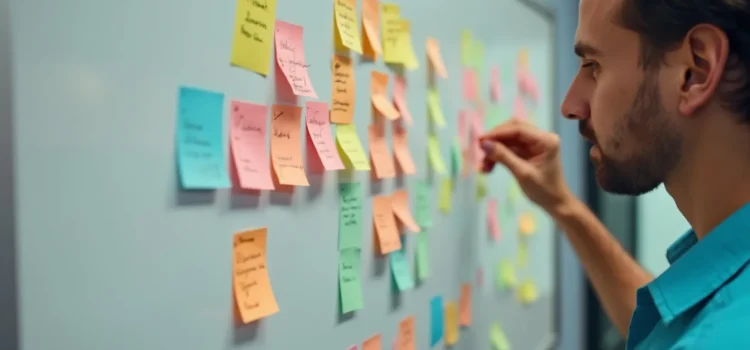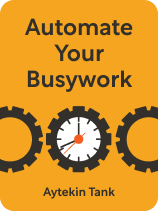

This article is an excerpt from the Shortform book guide to "Automate Your Busywork" by Aytekin Tank. Shortform has the world's best summaries and analyses of books you should be reading.
Like this article? Sign up for a free trial here.
What if you could save hours of time on repetitive tasks? How can you make your work processes more efficient without sacrificing quality?
In his book Automate Your Busywork, entrepreneur and productivity expert Aytekin Tank explains how to eliminate redundant steps and create more efficient systems that adapt to changing needs. He says you can do this by examining your workflows and identifying opportunities for improvement.
Read on to discover how to streamline a process by answering four key questions.
How to Streamline a Process
Once you understand how your tasks fit into larger processes, you should plan ways to make these overarching processes as efficient as possible. This will remove redundant tasks, making it easier to convert them into automated workflows. Tank shares practical advice on how to streamline a process, asserting that answering the following four questions will reveal efficiency strategies for your particular situation.
1) Are there any duplicate or unnecessary steps that can be removed? For example, you might be manually entering the same client information into both your accounting software and your project management tool, a redundant step that can be eliminated by setting up automatic data sync between the two systems.
(Shortform note: According to Jeff Sutherland (Scrum), one way to identify redundant tasks is to seek out tasks or activities that cost more than they are worth. For example, manually cross-checking every entry in a large database might cost more in time and effort than the few errors it catches.)
2) Are there ways to simplify specific steps or interactions? For example, you might create a single dashboard that displays all your clients’ social media metrics in one place, instead of logging into multiple platforms to gather this information.
(Shortform note: Don Norman (The Design of Everyday Things) adds that focusing on user experiences can help identify tasks that need to be simplified. This involves observing how people interact with your current system and noting where they struggle. These pain points often reveal overly complex steps. For example, if users frequently misfile reports in a labyrinthine folder structure, simplifying to a tag-based system could improve efficiency and reduce errors.)
3) Are there ways to standardize the process or to create rules to handle different scenarios? For example, you might create a standard set of data visualization templates for different types of social media metrics (engagement rates, follower growth, post reach), to quickly generate appropriate charts for various aspects of your reports.
(Shortform note: Some data scientists recommend using decision trees to standardize processes involving multiple scenarios. These visual diagrams guide users through a series of questions, each answer leading to a specific action or next step. For complex tasks, this approach ensures consistency and reduces errors by providing a clear path forward for each possible situation.)
4) Are there ways to build flexibility into your automation system so it can adapt to changing needs? For example, you might use a modular approach when creating report templates, allowing you to easily add or remove sections based on individual client preferences without redesigning the entire report
(Shortform note: Nassim Nicholas Taleb (Antifragile) suggests that you can maintain adaptability by incorporating multiple pathways to achieve the same outcome. For example, you might use automated and manual methods to gather data. While this approach may seem to contradict the goal of streamlining, it enhances long-term efficiency by reducing vulnerability to unexpected changes or disruptions.)

———End of Preview———
Like what you just read? Read the rest of the world's best book summary and analysis of Aytekin Tank's "Automate Your Busywork" at Shortform.
Here's what you'll find in our full Automate Your Busywork summary:
- How to use automation tools to free up space
- The negative effects of manually doing boring tasks
- How to choose the automation tool that’s right for you






